Weather warnings are in force across swathes of Spain as further storms approach on the heels of devastating flooding which has claimed at least 158 lives – making it the country’s worst natural disaster in living memory.
Prime minister Pedro Sanchez has warned that the devastation caused by flash flooding is “not finished” as he declared Valencia a “disaster zone” on Thursday. Urging residents to remain in their homes, he said: “Right now the most important thing is to safeguard as many lives as possible.”
Cities such as Valencia and Malaga were inundated this week after nearly a year’s worth of rain – close to half a metre – fell in just eight hours in some areas, leaving residents “trapped like rats” in homes and cars, as described by one desperate local mayor recalling the chaos.
As volunteers engage in a huge clean-up effort after the floods swept away bridges and deposited cars and other debris in piled heaps on streets thick with mud, Spain’s transport minister Oscar Puente said rescue workers were facing the task of recovering bodies believed to still be trapped in vehicles.
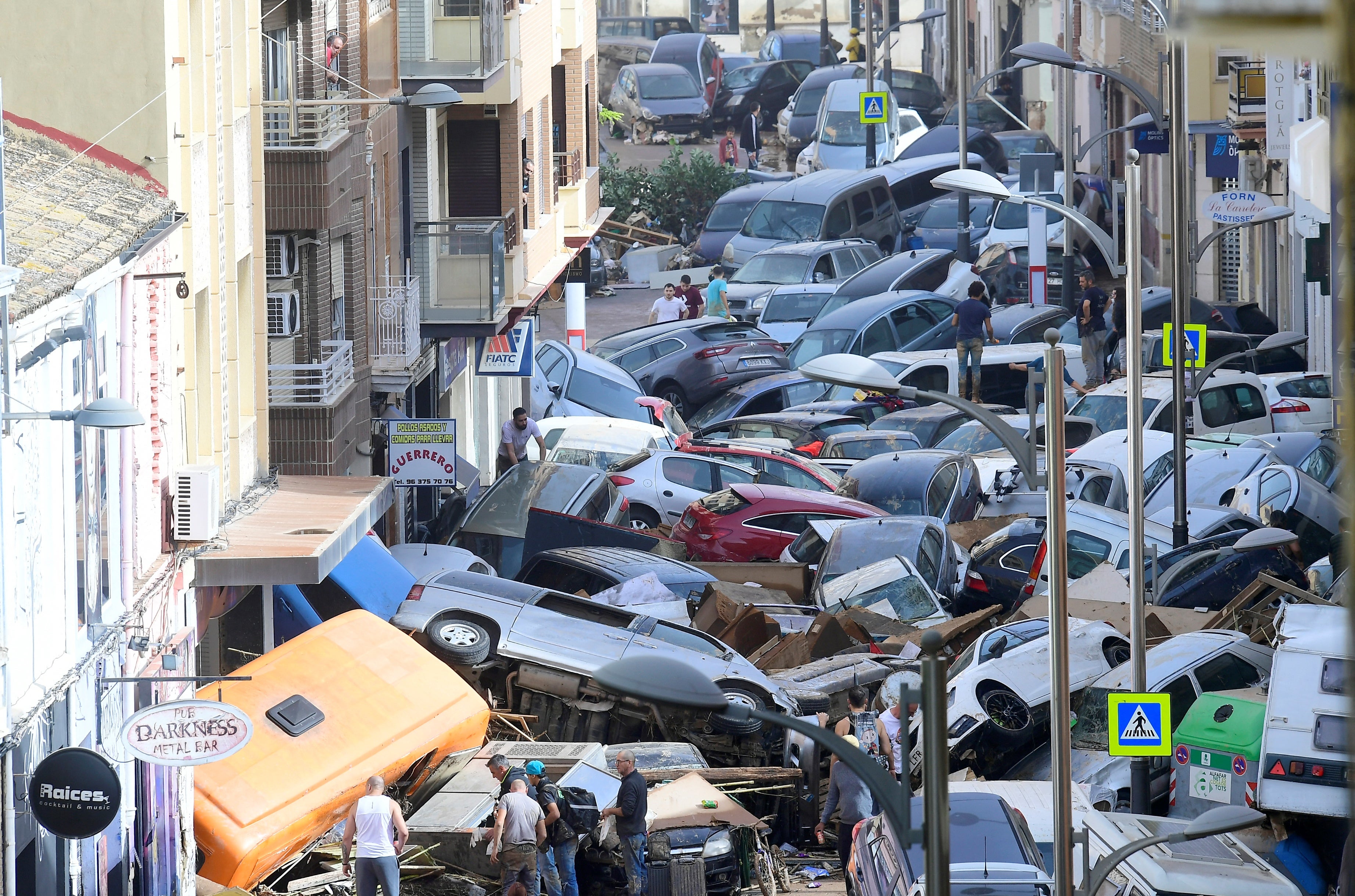
But further extreme weather is forecast, prompting further weather warnings in large parts of the country on Thursday.
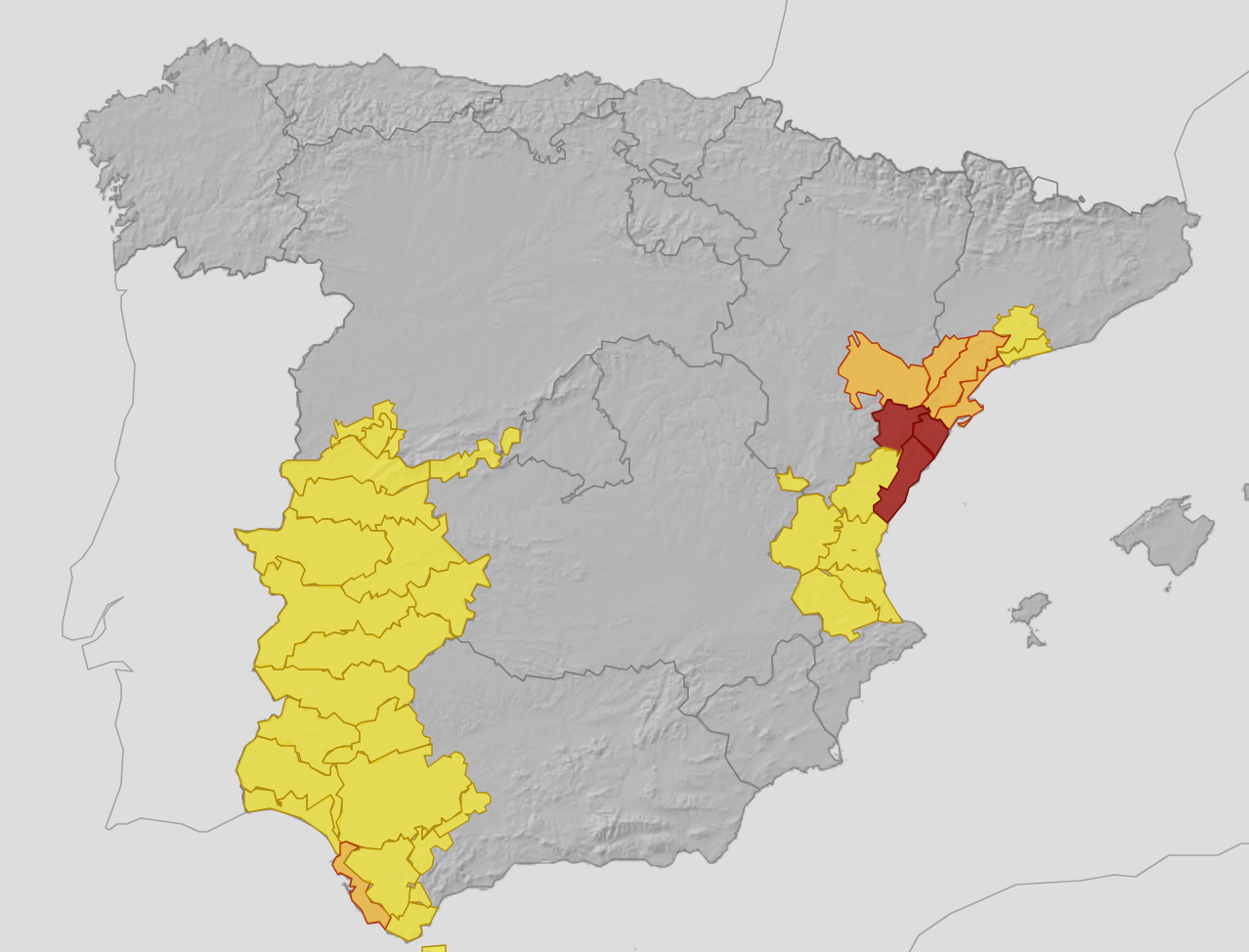
Calm weather returned to the hardest-hit areas around the city of Valencia, but the AEMET state weather agency issued its highest level of alert for the province of Castellon, warning of “very strong storms” and urging people to avoid the area.
Further north in the Catalonia region, an amber alert was issued for the city of Tarragona, where forecasters warned that 100m of rain could fall within just eight hours. Tarragona lies just 50 miles southwest of Barcelona.
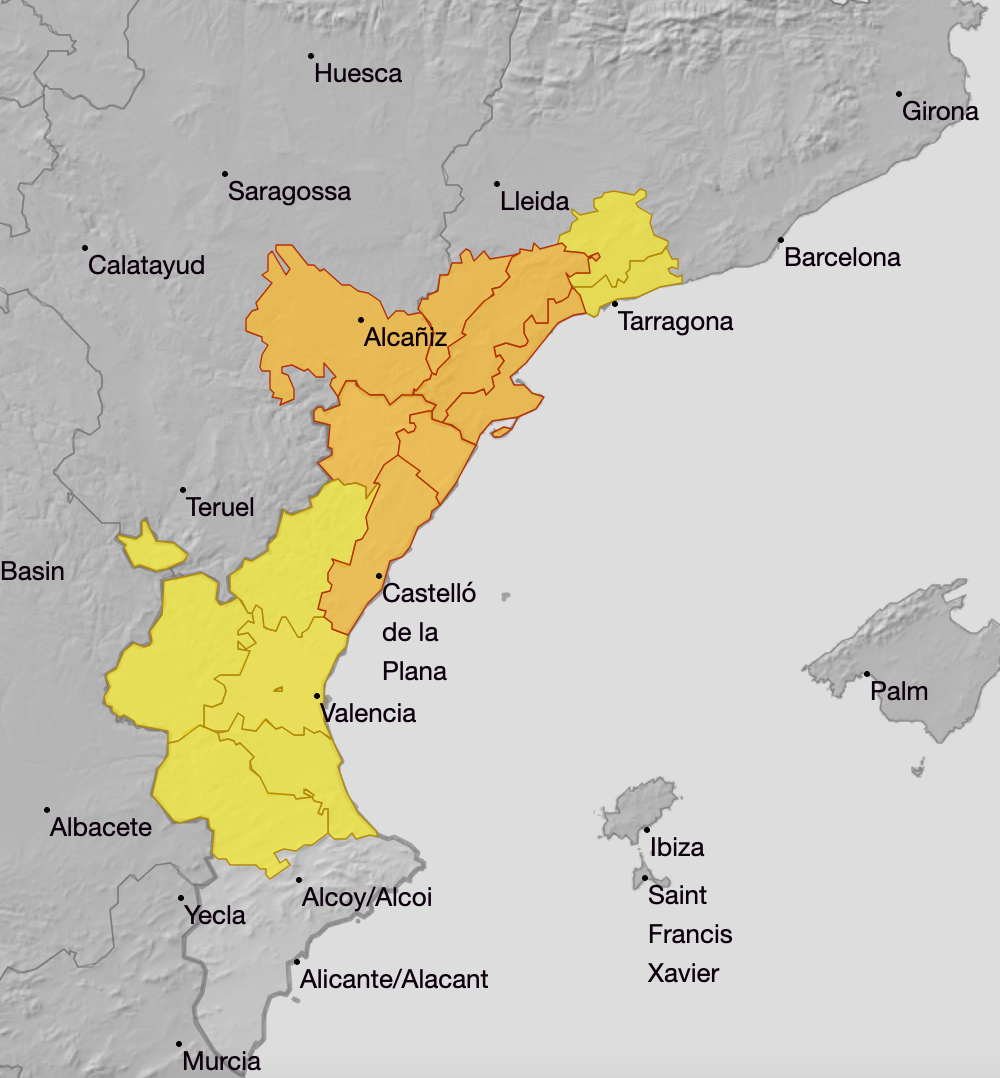
Lesser warnings for heavy rainfall were also issued along much of the country’s western border with Spain, running from the south coast to close to Avila in the north.
Those warnings, of up to 60mm of rain in 12 hours, cover an area spanning around 150 miles from east to west, including the popular tourist destinations of Seville and Cadiz.
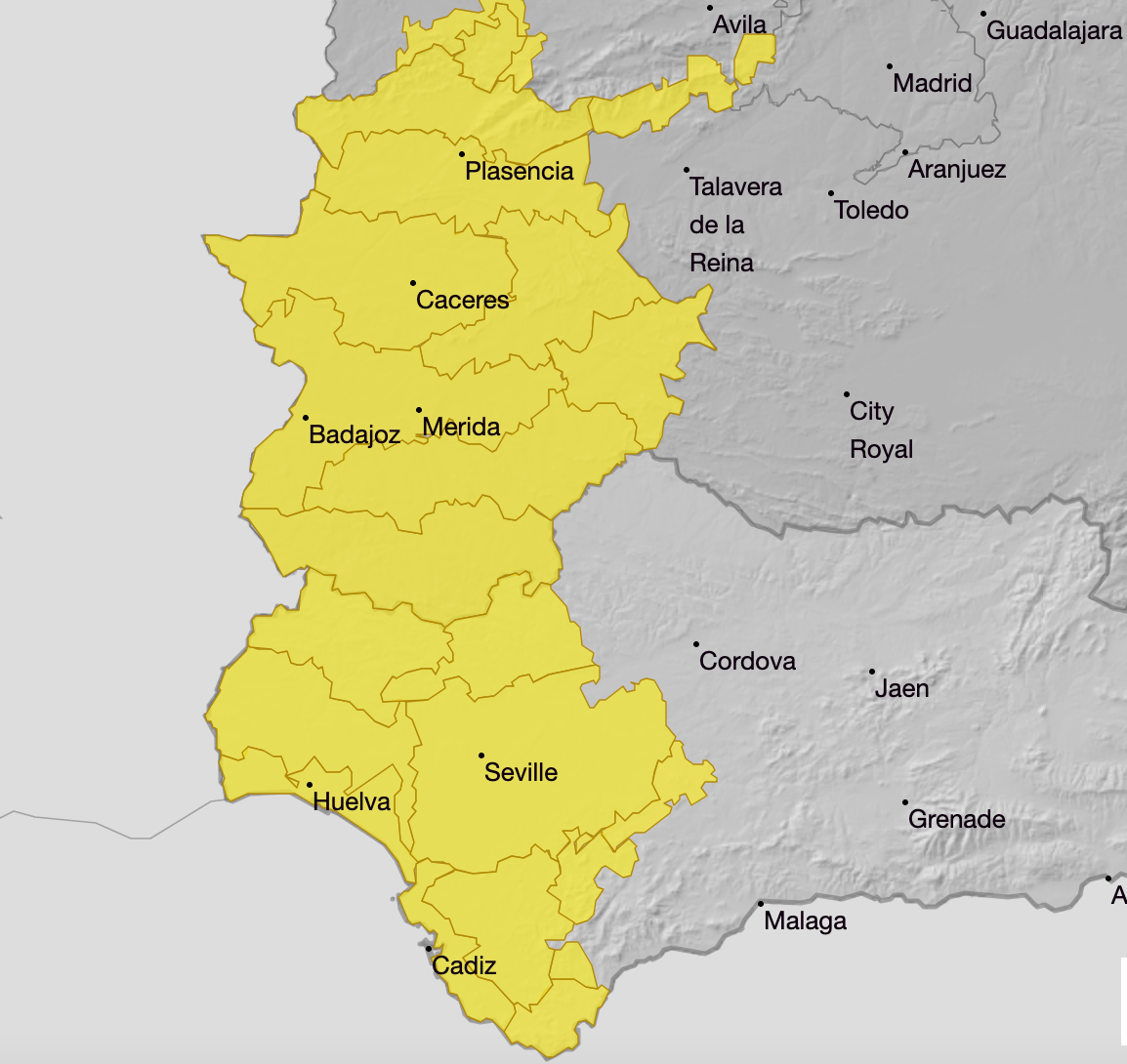
“This storm front is still with us,” Mr Sanchez said on Thursday. “Stay home and heed the official recommendation and you will help save lives.”
As search and rescue efforts continued, the death toll from the floods continued to rise on Thursday, soaring from 95 to 158. Of those, 155 were reported in the Valencia region. Two fatalities were reported in the neighbouring Castilla-La Mancha region and one in southern Andalusia.
Read our liveblog on the floods for the latest updates
The greatest pain was concentrated in Paiporta, a community of around 25,000 next to Valencia city where mayor Maribel Albalat said on Thursday that 62 people had died.
While the most suffering was inflicted on municipalities near the city of Valencia, the storms unleashed their fury over huge swaths of the south and eastern coast of the Iberian peninsula.
Homes were left without water as far southwest as Malaga in Andalusia, where a high-speed train derailed on Tuesday night. None of the nearly 300 passengers were hurt.
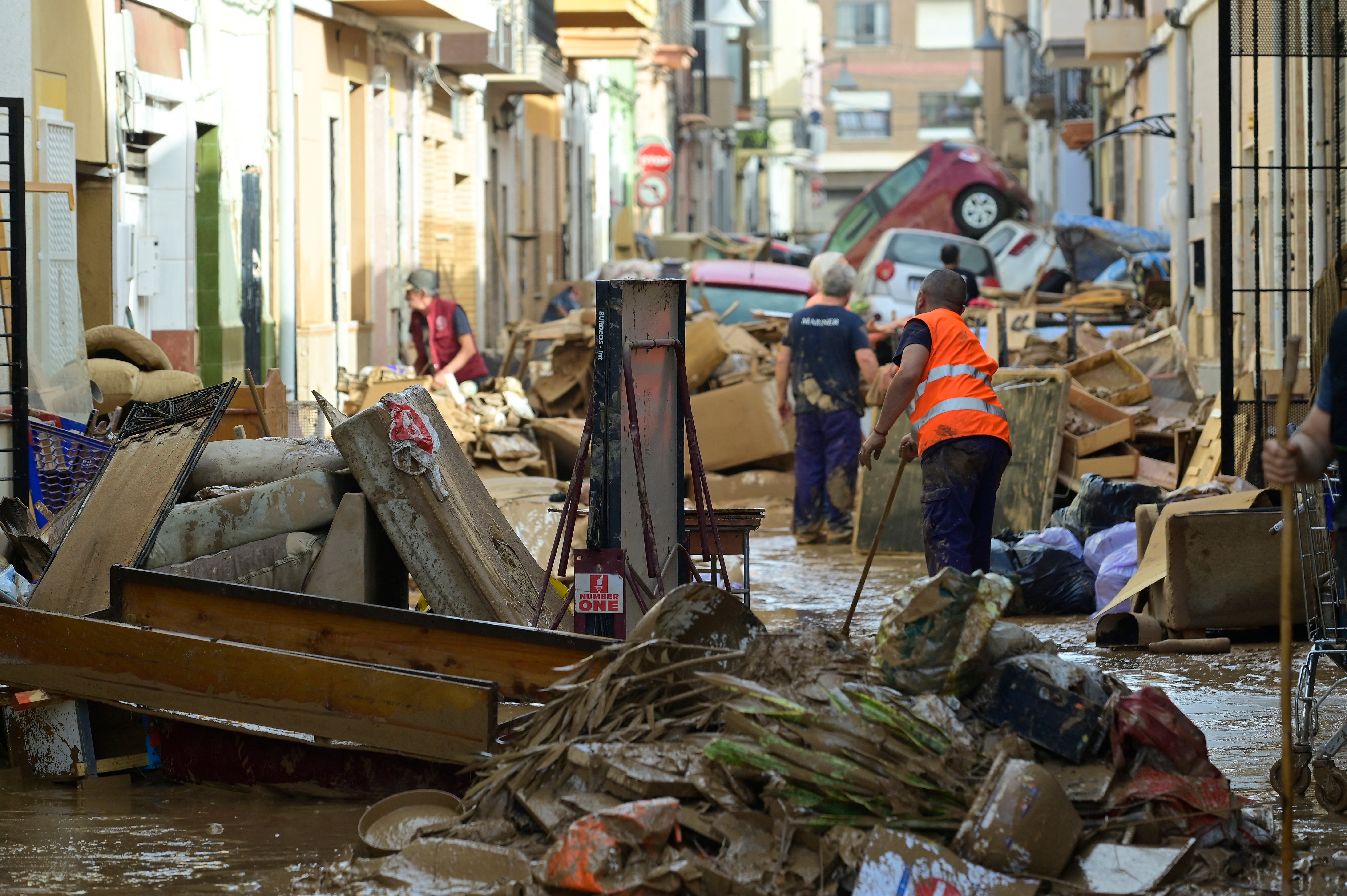
Greenhouses and farms across southern Spain were also ruined by heavy rains and flooding. The storms spawned a freak tornado in Valencia and a hail storm that punched holes in cars in Andalusia.
The town of Chiva, west of Valencia province, recorded 491mm of rain in just eight hours – more than it has seen over the past 20 months, according to Spain’s weather service.
Spain’s Mediterranean coast is used to autumn storms that can cause flooding, but this was the most powerful flash flood event in recent memory. Scientists link it to climate change, which is also behind increasingly high temperatures and droughts in Spain and the heating up of the Mediterranean.
Human-caused climate change has doubled the likelihood of a storm like this week’s deluge in Valencia, according to a rapid partial analysis by World Weather Attribution, comprising dozens of international scientists who study global warming’s role in extreme weather.
Additional reporting by agencies




